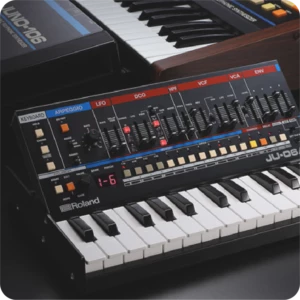Vocal processing is arguably one of the trickiest parts of the mastering process. Regardless of whether you’re producing an acapella track or you’re making a song with ample synthesizers behind the artist, you want to make sure that the vocals are in the foreground and that they sound like a cohesive part of the audio rather than disjointed from it and riddled with mistakes.
While learning how to go about vocal processing can take time, there are some tips and tricks that can help you get a professional sound every time. Let’s take a closer look at mastering the art of vocal processing so you can get the perfect sound no matter what you’re working on.
Use Double Tracking to Thicken Up the Sounds
Double tracking is a very common practice whereby the artist will record the same parts several times, either layering it by adding a new harmony or simply singing the same thing. When you do this, it adds more body and presence to your vocals, making them more prominent and improving the overall quality. While you don’t want to overdo it, double tracking is something that will help you with vocal processing to get a much better result.
Get the Perfect Amount of Presence From Your Vocals With Stereo EQ
Stereo EQ helps to bring out the mid-range frequencies in vocals (or even put them in the background), giving you much more control over your vocals for better sound mixing. Stereo EQ can help your vocals sound brighter, ensure that they’re prominently featured in your track rather than drowned out by the other synths or instruments you’re using, and help you maintain the right sound no matter what type of track you’re producing. Don’t forget about stereo EQ when you’re working on your mix, especially when it comes to vocals!
Balance Things With Mid/Side EQ and Compression
Mid and side EQ and compression essentially help you improve the width and the tonal balance of your vocals, which is not only important in making the vocals sound better but also in ensuring that they blend well with the vocals, either coming in or blending into the background depending on your track. These strategies can be a bit trickier than some of the other vocal processing tips and tricks you’ll use, so don’t be afraid to do more independent research to see how others are using these tools and how you can emulate them to achieve a similar sound.
Don’t Forget About Your Reverb
Reverb can be used to quite literally add presence to vocals. Imagine that you’re recording vocals in a closet. A confined space doesn’t offer much in terms of boosting the voice, which means that things can sound rather bland. Now, imagine that you’re singing in a large cathedral. The wide open space adds more presence to the voice in a way that other spaces might not. Reverb is an effect that mimics larger recording spaces for greater presence. If the vocals seem to fall flat in comparison to the rest of the track, try adding reverb to improve everything.
Make Sure to Get Rid of Noises That Sneak Their Way in
When it comes to vocal processing, most are only focused on figuring out how to enhance vocals, not cut things out. That being said, unwanted sounds are almost guaranteed to sneak their way into vocal tracks regardless of where you’re recording. Carefully go over the vocals on their own to remove these sounds so that way the final product sounds professional.
Improve The Quality of Your Tracks With Sikk Sounds
Looking for the right tools to help you take your music to the next level? Whether you’re looking for a pop sample pack or serum presets, Sikk Sounds is here to deliver superior sample packs and sounds to bring your music to life. Contact us today to ask us any questions you might have, or shop now to get started!





